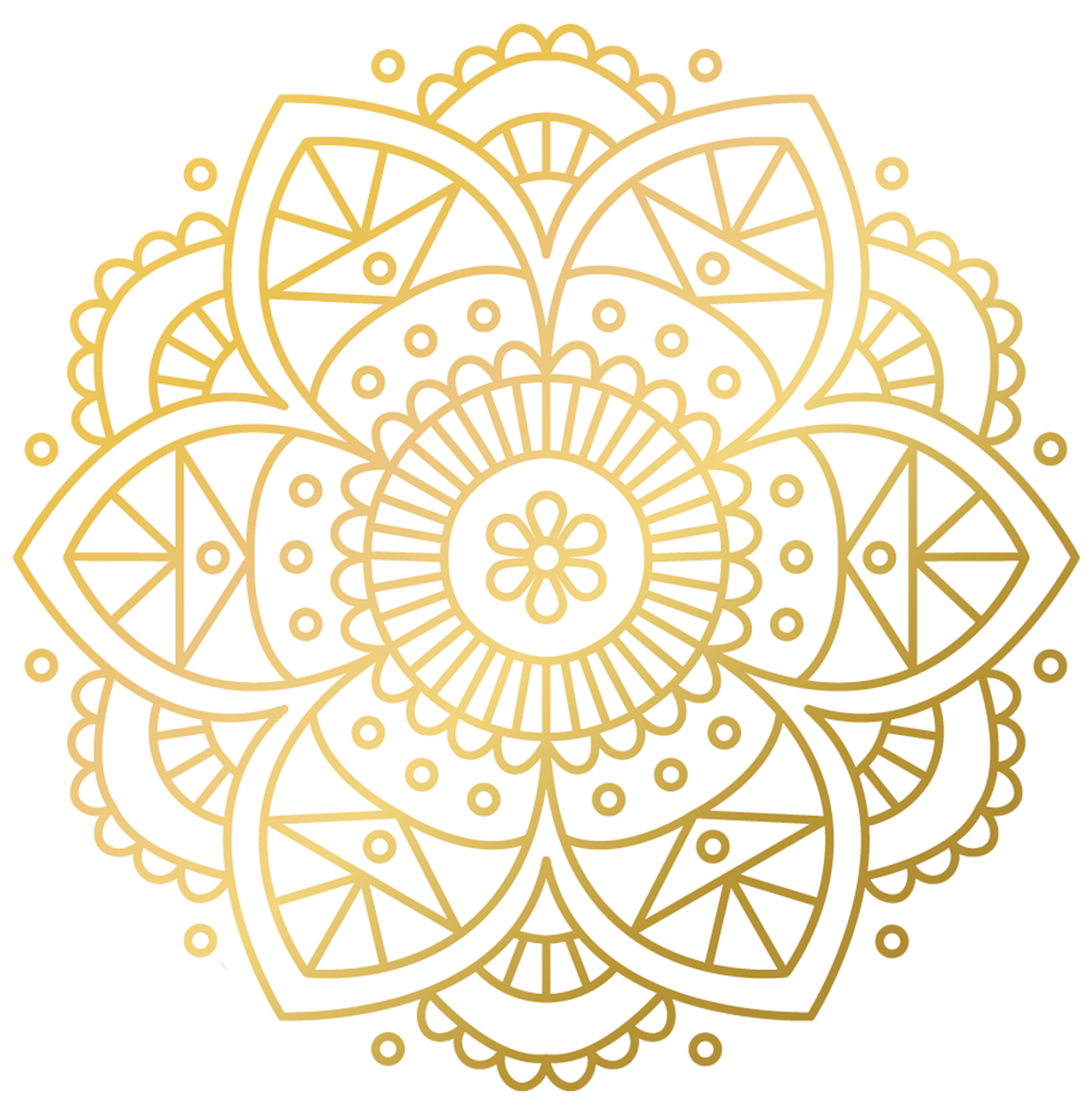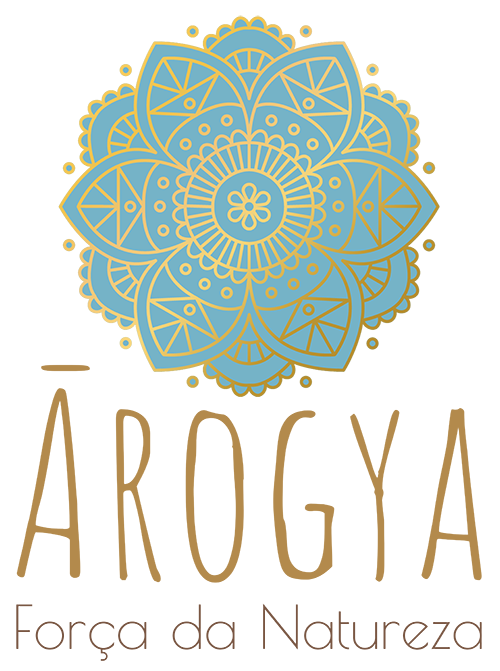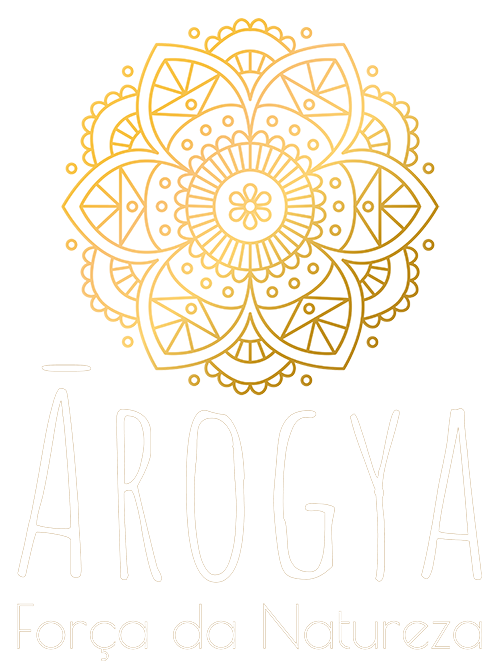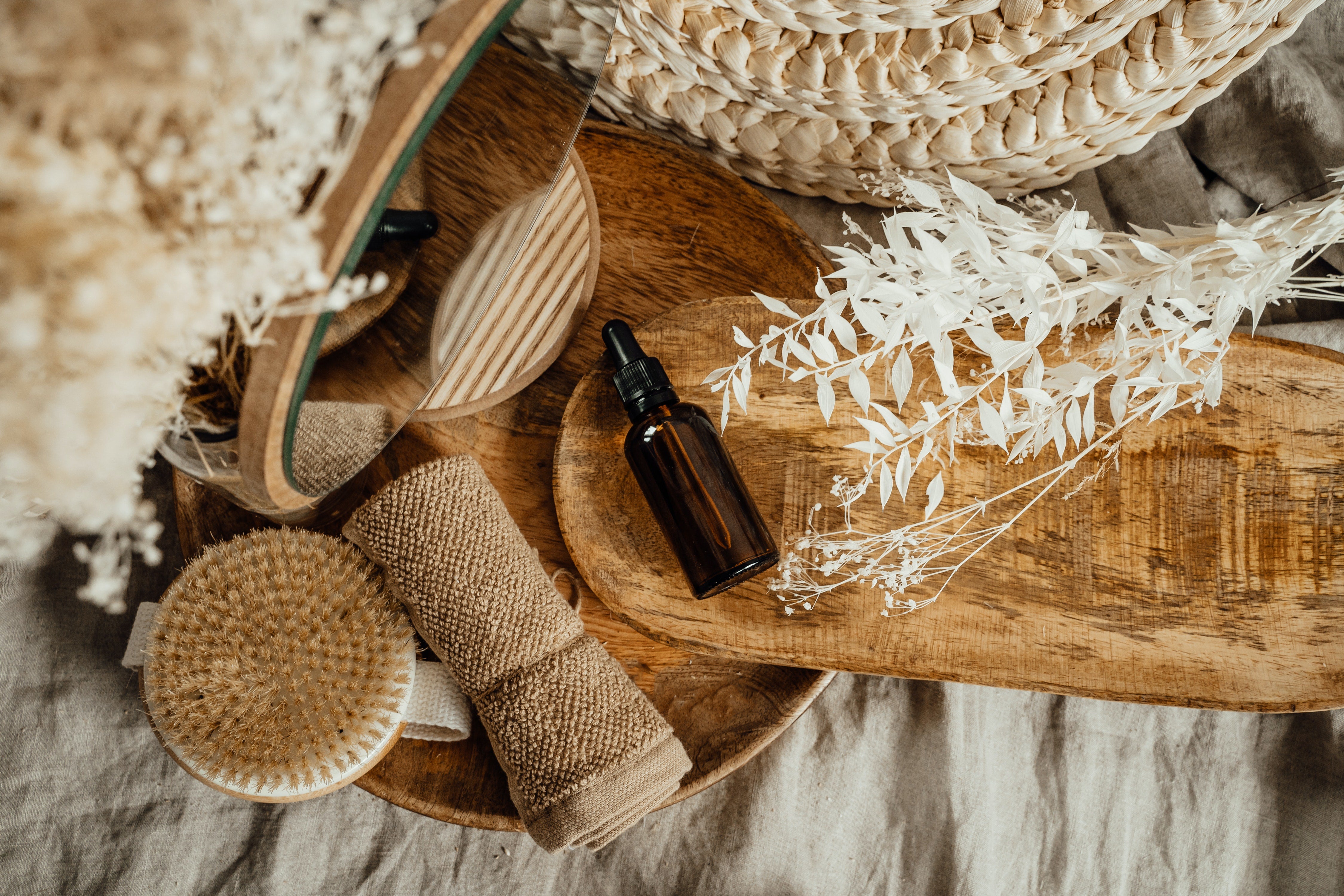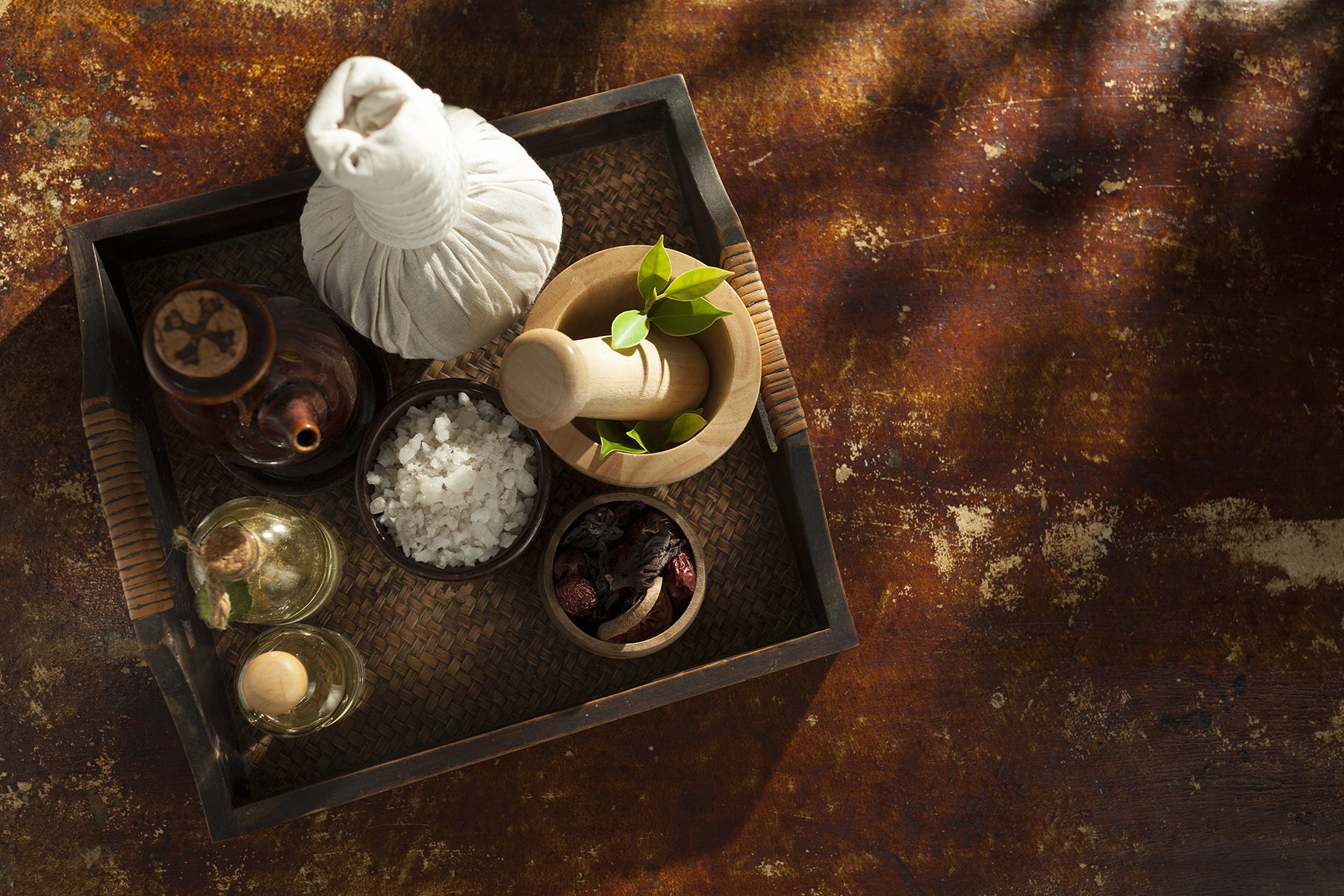What is Dinacharya?
Dinacharya is the Sanskrit term for daily Ayurvedic rituals that, when practiced regularly, help you maintain a life of optimal wellness through routine, detoxification and nutrition. When we are healthy and balanced, we are able to fulfill our Dharma, the essential purpose of our life, allowing us to feel our best and share our gifts with the world.
You should practice Dinacharya first thing in the morning to maintain connection with nature's circadian rhythms. Today's fast-paced social norms keep us disconnected from nature due to our constant access to electricity, dependence on handheld devices, pressure to make the most of our days, social media, and countless other distractions we've become accustomed to in our lives.
Fortunately, through the ancient practice of Dinacharya, we can deepen our roots back to nature and begin to re-establish a connection with our authentic self.
By implementing the fundamental self-care practices of Dinacharya into your life with our easy-to-follow daily routine guide, you will be equipped with the tools necessary to cultivate balance, happiness, and overall long-term health. Each of the following practices are discussed in the general order in which they can be implemented into your daily ritual.
Dinacharya: Daily Morning Routine
Best time to do between 6am and 10am, during the Kapha hour of the day, when you have the most strength, stability and steadiness.
1. Wake up to the sunrise

One should wake up about an hour and a half before sunrise so that one can synchronise with the rhythm of the sun. Ayurveda recommends an auspicious hour-Brahma Muhurta, which means "the hour of Brahma...the pure consciousness-to wake up in the morning".
About an hour and a half before sunrise, a big shift in energy fills the space. Then, about half an hour before sunrise, a second burst of energy dawns in the atmosphere. Hope, inspiration, and peace manifest in this moment. This time is considered to be the best time to achieve bhram gyan (meditation and self-analysis), supreme knowledge, and eternal bliss. At this time, the environment is pure, calm and calming, and the mind is fresh after sleep.
Meditation at this time improves mental performance. This helps to increase sattva guna, which in turn calms rajas and tamas guna, which cause mental irritation, hyperactivity, and laziness.
Getting up earlier than you normally do can give you a chance to energetically connect with yourself. Even if for just 3 minutes, take time to thank life.
2. Wash your face and eyes
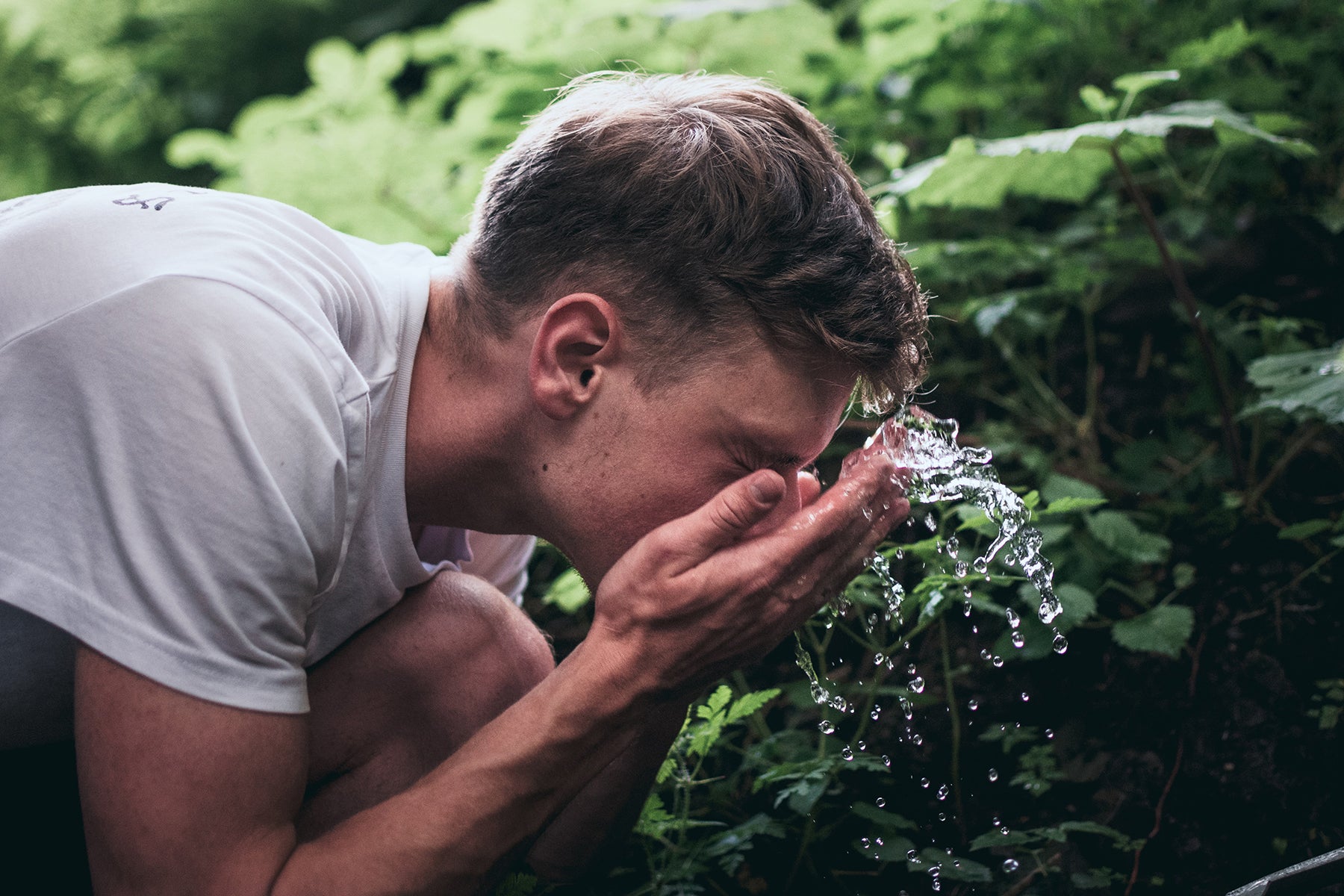
To stay awake for the rest of the day, splash your face with cold water. To purify, soothe, and maintain eye health, Ayurveda recommends cleansing the eyes. Wash your eyes with cold water and gently massage the eyelids. Blink your eyes seven times and roll them in all directions.
Using a clean towel, dry your face with a gown. In today's modern, technology-saturated world, our senses, particularly our vision, are under extreme strain. We are spending more time than ever looking at screens of various types, whether for work or play. All these devices emit blue light, which causes eye strain, fatigue, and dryness when viewed over a prolonged period of time.
3. Tongue Cleaning
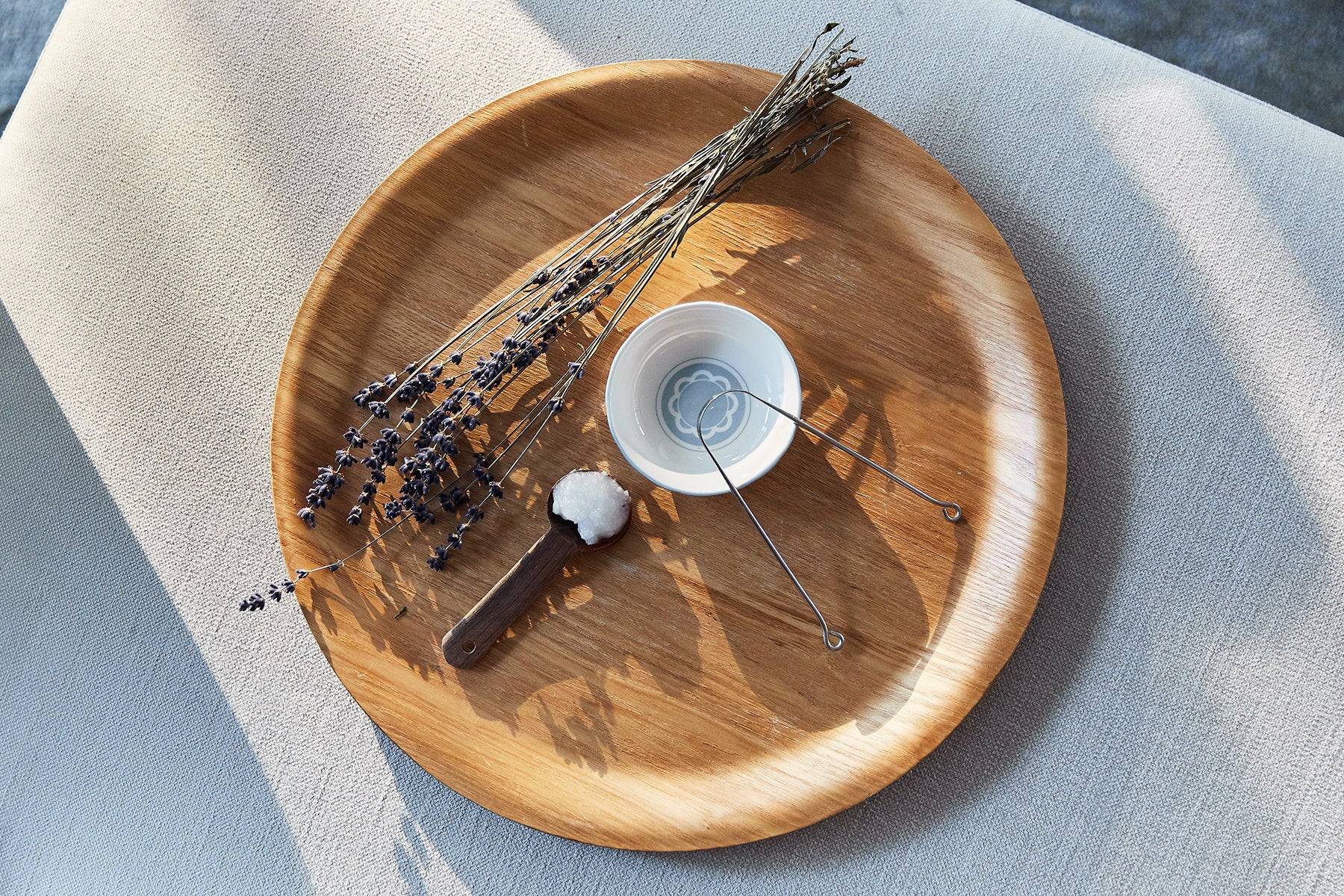
Tongue cleansing or tongue scraping is the daily Ayurvedic ritual of gentle removal of unwanted toxins and residue from the tongue. This practise gets rid of the bacteria that cause bad breath, gets rid of toxins in the body called ama, and gets the digestive system ready by waking up the taste buds.
Traditionally, tongue scrapers are made of copper, which provides a powerful and natural antibacterial action. Copper tongue scrapers clean thoroughly and last longer than plastic or stainless steel options.
HOW TO USE:
For example, open your mouth and stick out your tongue to inspect for a coating. Place the tongue scraper on the back of the tongue and very gently scrape the lining forward and out of the mouth. Rinse the tongue scraper and repeat this process until you no longer see residue accumulating on the tongue scraper and your tongue is clean.
4. Tooth Brushing
Brushing your teeth should be done with a toothpaste with an astringent, bitter, or pungent taste.
5. Mouthwash with Oil (Oil Pulling)
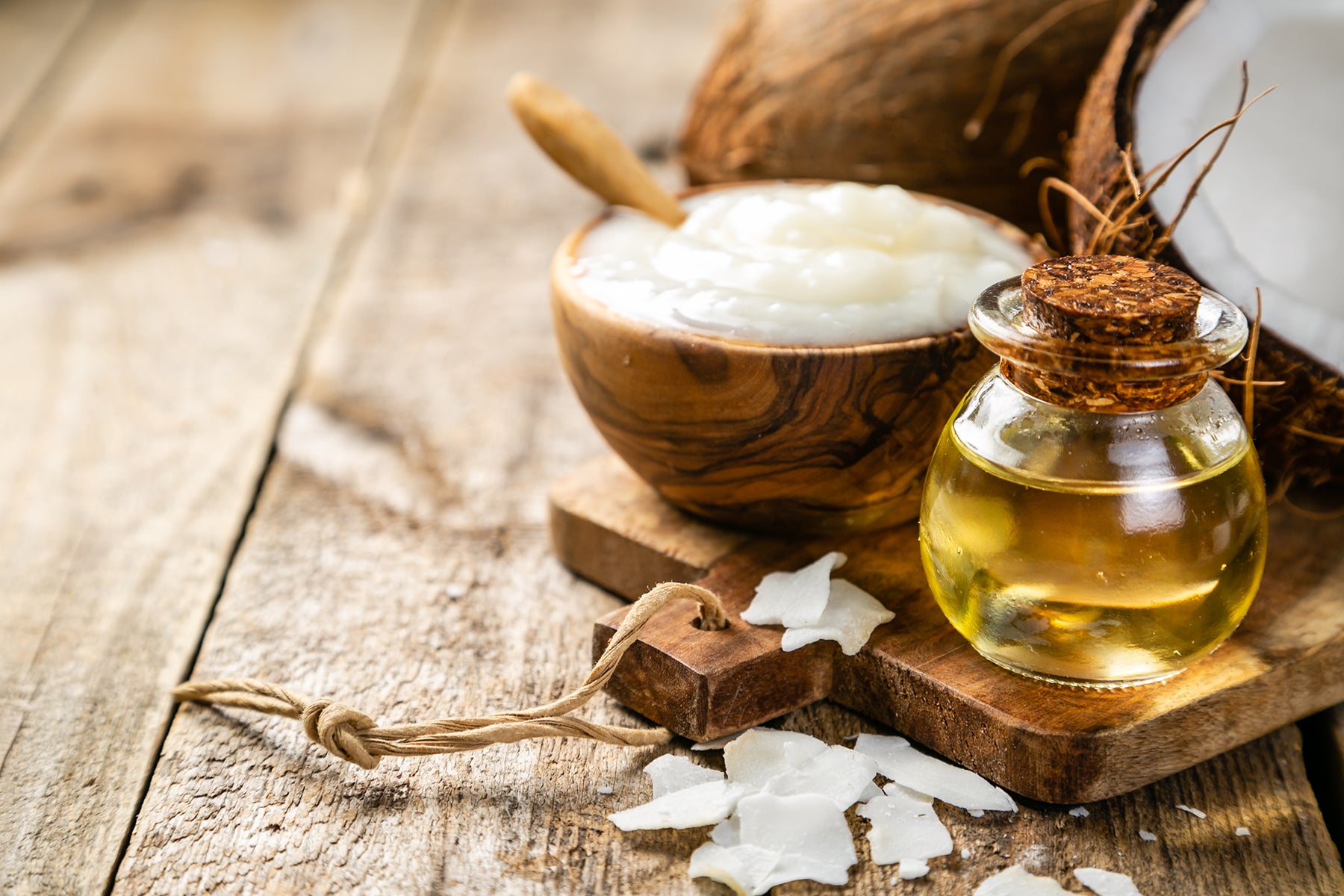
You may have heard of oil mouthwash as it is currently becoming a worldwide health trend. People are starting to learn about the many benefits of this simple practice, but they probably don't know that it comes from Ayurveda.
Known in Sanskrit as Kavala Graha or Gandusha, oil rinsing is the ritual of rubbing the oil through your teeth for 15–20 minutes to support general oral health and hygiene. Do this dinacharya every morning to strengthen gums, whiten teeth, eradicate plaque, rebuild enamel, remove toxins from the body, eliminate bad breath, and relieve symptoms of temporomandibular joint (TMJ) dysfunction.
Many people enjoy using coconut oil as a base for oil pulling, and we fully support this method as coconut oil is easily accessible, has a pleasant flavour, and has antibacterial and antifungal properties. However, we would also like to suggest using sesame oil as it is the preferred Ayurvedic oil for oil mouthwash due to its antibacterial, rejuvenating, and highly nourishing properties, as is our oil with black cumin & lemon. Traditionally, turmeric and other beneficial herbs are also infused into the oil to increase its medicinal value.
HOW TO USE:
- Put about a tablespoon of coconut or sesame oil in your mouth.
- Swish the oil in your mouth for 15-20 minutes, being careful not to swallow it.
- Spit the oil into a dustbin once finished. Avoid spitting into the sink or toilet, as this can cause oil to build up, which can lead to clogs.
- Rinse your mouth well with water before eating or drinking anything.
- Repeat these steps a few times a week or up to three times a day.
6. Gum Massage
You may also want to initially do it for just 5 minutes and increase the duration until you are able to do it for a full 15-20 minutes. For best results, it is recommended to do this first thing in the morning on an empty stomach, although you can adapt this based on your personal preferences.
These Ayurvedic practises are almost self-explanatory: brush your teeth and floss. We recommend flossing at night before bed to remove any food debris, harmful bacteria, and plaque before bed. A less common practise is to massage the gums.
Studies have shown that massaging the gums daily with sesame oil reduces the oral count of Streptococcus mutans and Lactobacillus bacteria, both of which are responsible for caries and plaque. Sesame oil reduces the ability of bacteria to adhere to teeth and gum surfaces, while massaging the gums improves circulation to the gum tissue, which helps our ojas, or immune system, stay strong.
HOW TO USE:
Place a few drops of pure organic sesame oil on your clean index finger. Massage the gums in gentle circular motions, starting from the back of the mouth and moving forward. Reapply oil as needed. Massage your gums for 10 minutes, then flush out the oil residue in the trash and rinse your mouth with warm water.
7. Drinking water

Ayurveda suggests the healthy habit of drinking water first thing in the morning, which is known as Ushapan. It helps to get rid of many body ailments. When you drink water first thing in the morning, it helps get rid of all the toxins in your body and cleans out your intestines.
8. Elimination
Ayurveda has a nice way of talking about bowel movements, referring to this as elimination. Making time for elimination should definitely be part of your daily routine. According to Ayurveda, 1-3 bowel movements a day are considered healthy and regular, so if you don't have a bowel movement daily, it's time to take action.
One of the most interesting things we learned while studying Ayurveda is that if you don't eliminate daily, you are constipated, which is considered a vata imbalance. When you have constipation, it's because your body is dehydrated and taking the water from your poop back into itself.
The remedy for constipation is to add healthier oils like ghee, coconut or sesame oil to your diet, drink more water, and incorporate demulcent herbs like flaxseed, shatavari, and licorice into your diet. We strongly recommend Ayurvedic Tea to help retain moisture in the body and also a daily intake of the classic Ayurvedic herbal formulation known as Triphala.
TIPS:
If morning eliminations aren't part of your daily routine, start practising sitting on the toilet to allow adequate time for eliminations. When sitting on the toilet, it is best to imitate the appearance of the body in the squatting position. We know it sounds silly, but you might want to consider investing in a squatting potty or just resting your feet on the toilet seat to ensure your knees are above your hips, which simulates a natural squatting position.
9. Neti Pot & Nasya
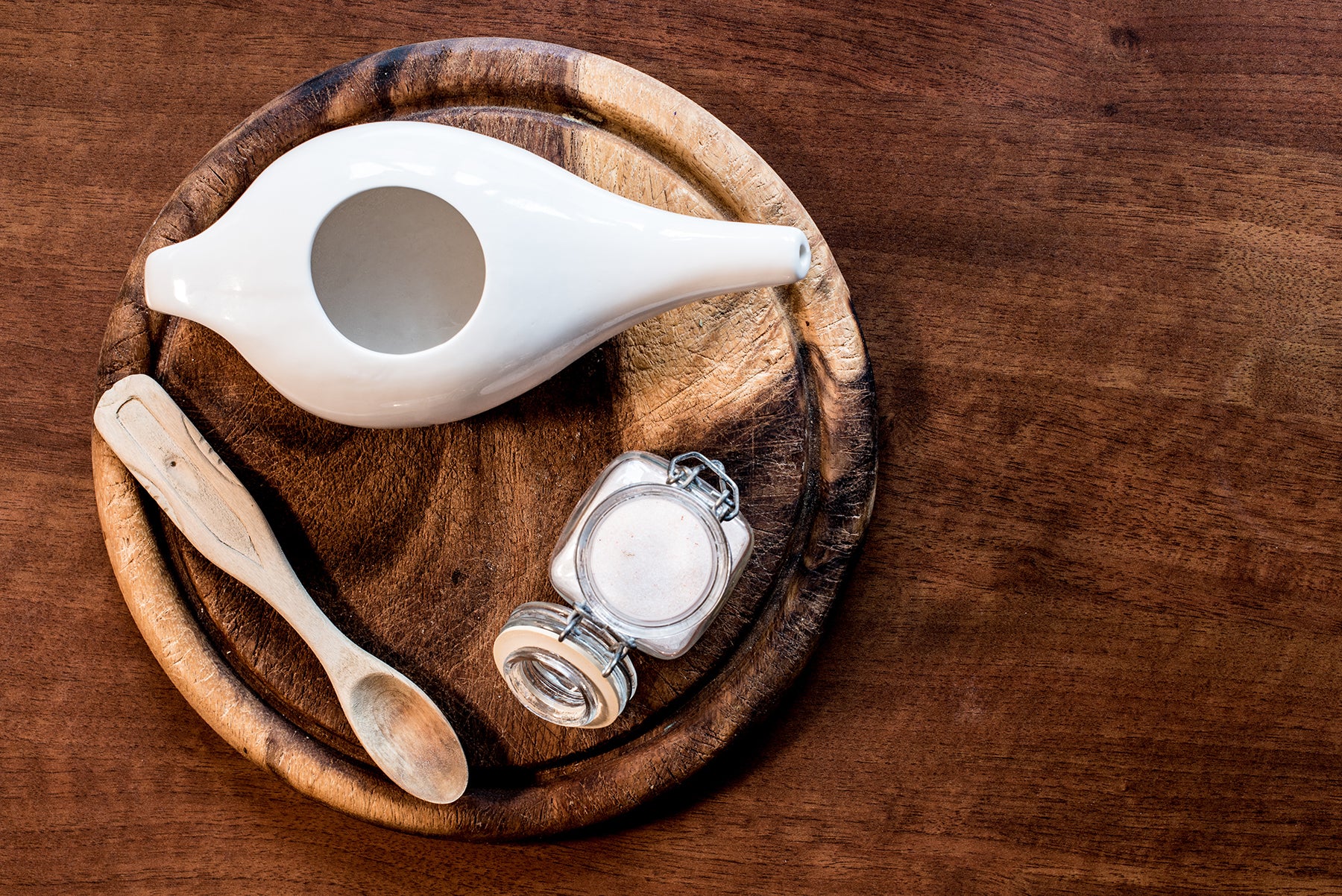
Ayurveda believes that the nasal passage is the gateway for prana, our breath and vital energy, to enter the body via a direct route to the brain. That's why it's important to keep this vital passage clean, healthy, and unimpeded through the use of the nasal neti pot and nasya in your daily routine.
Nasya is the Ayurvedic term for nasal therapy. Nasya oil can be used alone or in combination with a neti pot to oil and moisturise the nasal passages. Traditionally, Nasya Oil is made from a blend of sesame oil and organic plants that help to cleanse, moisturise and protect the nasal passages and sinuses.
Benefits of using a Neti Pot:
- Clearing mucus and relieving sinus infections and colds
- It reduces snoring and breathing problems.
- Help against allergy symptoms!
- It prevents nasal dryness.
- It reduces headaches
- It helps when you have problems with smell and taste.
HOW TO USE:
- Add the saline solution.
- Bend over the sink
- Turn your head at a 45-degree angle.
- Gently press the beak of the neti pot into the nostril.
- The neti pot must not touch your septum.
Breathe through your mouth during this step.
- Tilt the neti pot so that the saline solution reaches the nasal cavity.
- Hold the neti pot upside down as the solution passes through your nostril and out the other nostril.
- Continue pouring the solution into your nostrils until the neti pot is empty.
- Inhale through both nostrils to clear your nose.
- Use a tissue to soak up the serum and any remaining mucus that drips from your nose.
Repeat the steps above to use the neti pot in your other nostril.
Safety tips:
Neti pots can be a great solution to congestion, but it's important to be careful when trying nasal irrigation.
Here are some tips to help you use the Nasal Neti Pot safely:
- Use only distilled water, tap water that has been boiled for a few minutes and let cool until it is lukewarm, or water that has been filtered properly.
- Do not use very hot or very cold water. Warm or room temperature water is best for your auction.
- Always clean and dry your neti pot after each use.
- Discontinue use if it stings your nostrils, causes earaches, or does not improve symptoms.
- Talk to a paediatrician before using the neti pot on a young child.
Neti Pot Care:
After each use, clean the neti pot with warm water. Dried well and stored in a clean, dry area.
10. Abhyanga
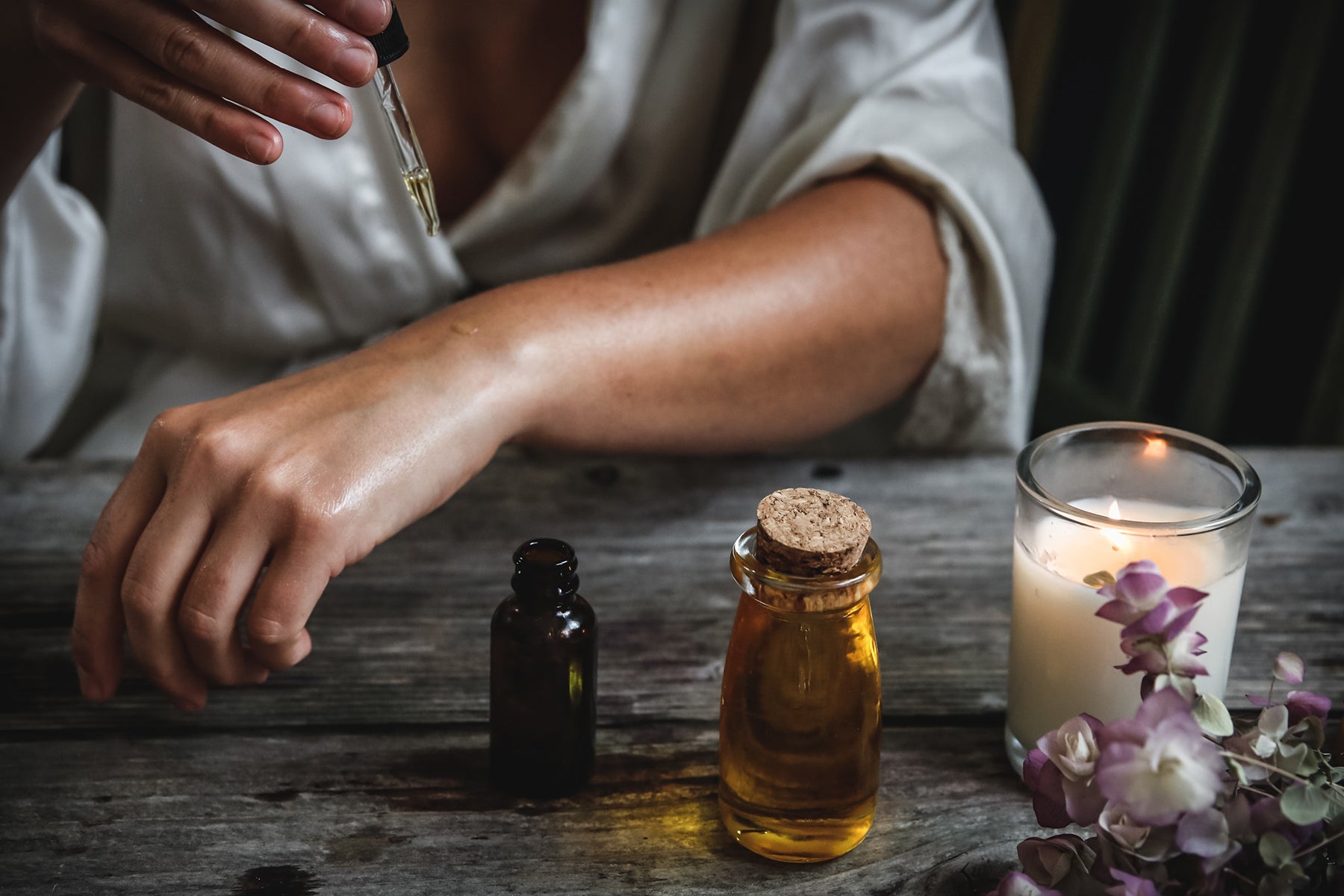
In Sanskrit, abhy means "to massage" and anga means "limbs", and together these terms define Ayurvedic massage. Thanks to the Ayurvedic practise of self-abhyanga, you don't have to wait for your next spa appointment to get a massage!
Self-abhyanga is the practise of rubbing hot oil on your body with a caring, loving touch. It has many benefits, including:
Nourishes and hydrates the skin; tones the dhatus, or body tissues; restores the musculoskeletal and nervous systems; aids in the detoxification of the lymphatic system; aids in healthy sleep; lessens the effects of aging; increases circulation; stimulates internal organs; restores apana vayu, or downward moving energy, which aids in healthy elimination.
When massaged into the skin, abhyanga oil penetrates deeply into your tissues, having a potent effect on the body and mind. The body oils at rogya come in a number of different options to meet the unique needs of each individual skin type.
Our Body Oils for Vata are designed to hydrate and soothe dry skin, providing a deep sense of grounding and warmth. Body Body Oils for Pitta are intended to soothe sensitive skin and/or inflammation, while cooling down heated emotions like irritability, anger, or resentment. Our Body Oils for Kapha are best for oily skin as they are formulated to quickly absorb and balance the skin's natural oil production without leaving a heavy, oily layer behind. It also helps to awaken and stimulate the senses.
Massage your body with love and patience for 15-20 minutes. Here are the oil type and frequency recommendations, based on doshas:
Vata Dosha:
4-5 times a week using Vata Dosha Oil, Óleo de Sésamo or Óleo Amêndoas Doces.
Pitta Dosha:
3-4 times a week using a Pitta Dosha Oil , Coconut Oil or Sunflower Oil.
Kapha Dosha:
1-2 times a week using a Kapha Dosha Oil, Safflower Oil (Safflower), Sunflower Oil and Calendula or Mustard Oil.
Good for all Three Doshas:
Coconut Oil and Shea Butter.
Instructions:
- Heat the oil (pour 14 cup into a mug and heat with a coffee cup warmer).Test the temperature by placing a drop on the inner pulse. The oil should be comfortably hot and not extremely hot.
- Sitting or standing comfortably in a warm room
- Apply oil first to the crown of the head (marma adhipati) and slowly massage from there in circular strokes-spend a few minutes massaging your entire scalp (home to many other important marma points-points of concentrated vital energy).
Enjoy a hot bath or shower. You can use a mild soap on "strategic" areas and avoid lathering and vigorously scrubbing your body. When you get out of the shower, dab gently with a towel.
Enjoy the feeling of having nourished your body, mind, and spirit and carry that with you throughout your day.
- Face: Massage in a circular motion on the forehead, temples, cheeks, and jaws (always in an upward motion). Be sure to massage your ears, especially your earlobes, at home, down to essential marma points and nerve endings.
- Use long strokes on the limbs (arms and legs) and circular strokes on the joints (elbows and knees). Always massage in the direction of your heart.
- Massage the abdomen and chest in large, clockwise, circular motions. In the abdomen, follow the course of the large intestine; it moves up on the right side of the abdomen, then transversely, then down on the left side.
- Finish the massage by spending at least a few minutes massaging your feet. The feet are a very important part of the body, with the nerve endings of essential organs and vital marma points.
- Sit with the oil for 5–15 minutes if possible, so that the oil can absorb and penetrate the deeper layers of the body.
11. Yoga

Ayurveda provides balance of body and mind, using everything that nature can give us—plants, stones, fragrances, water, air. Yoga helps to harmonise consciousness and the physical body using special techniques such as asanas, breathing practises (pranayama), meditation, and prayers pronouncing certain sounds.
Ayurveda recommends doing 10–30 minutes of dosha balancing asanas in the morning to help increase circulation, cultivate balance, improve flexibility, and increase strength in the body and mind.
12. Pranayama
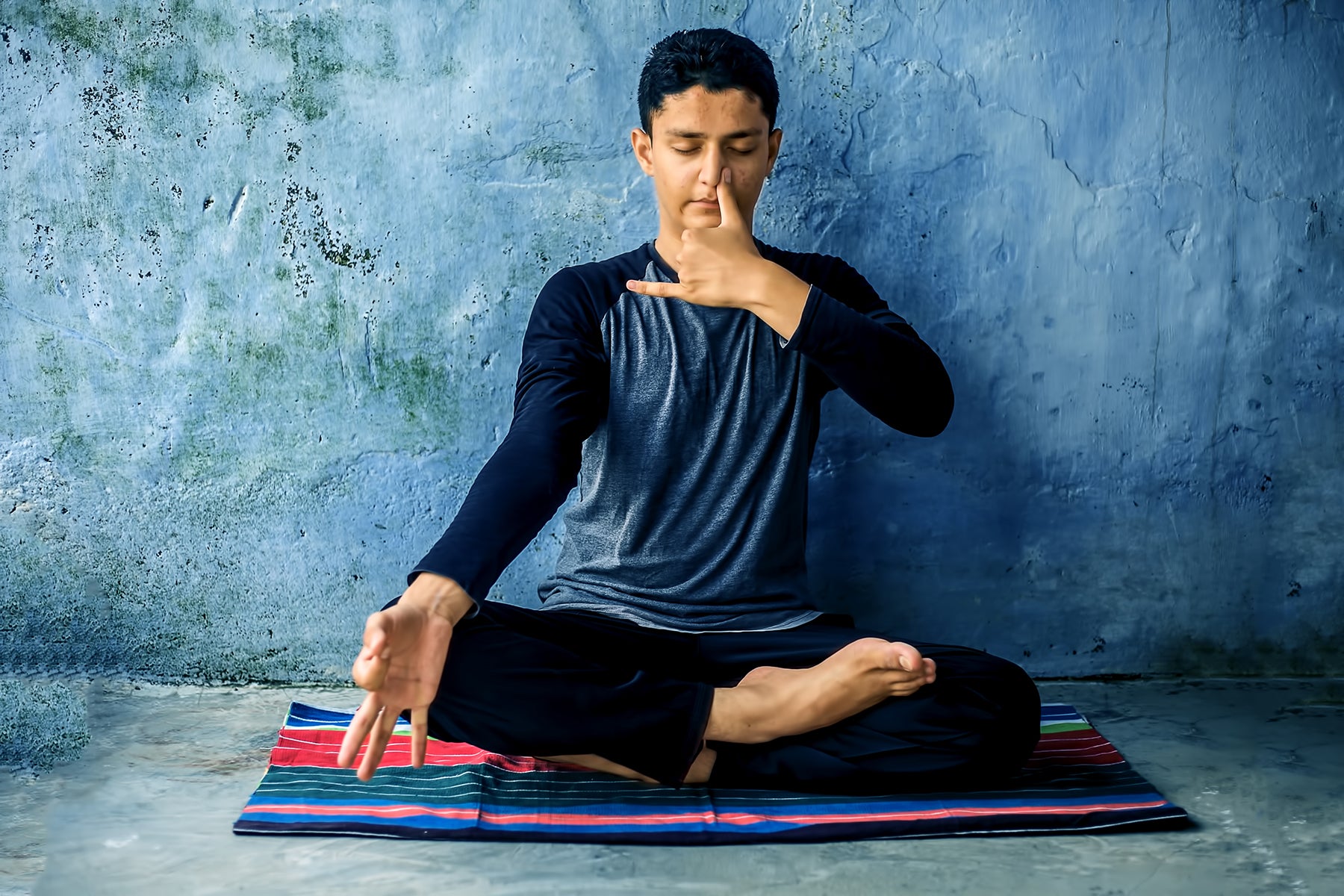
Breathing exercises are known in Sanskrit as pranayama. Prana is the breath. It is our "life force energy" and ayam means "to control". We need prana to fulfil our dharma and achieve our goals. We need ayam to control the breath, or prana, and direct our energy where we need it to go. When pranayama is done every day, the mind becomes more alert, energy is built up, and balance is kept.
There are many pranayama practises to choose from, and it is important to learn about the effects of each dosha before implementing them.
13. Meditation
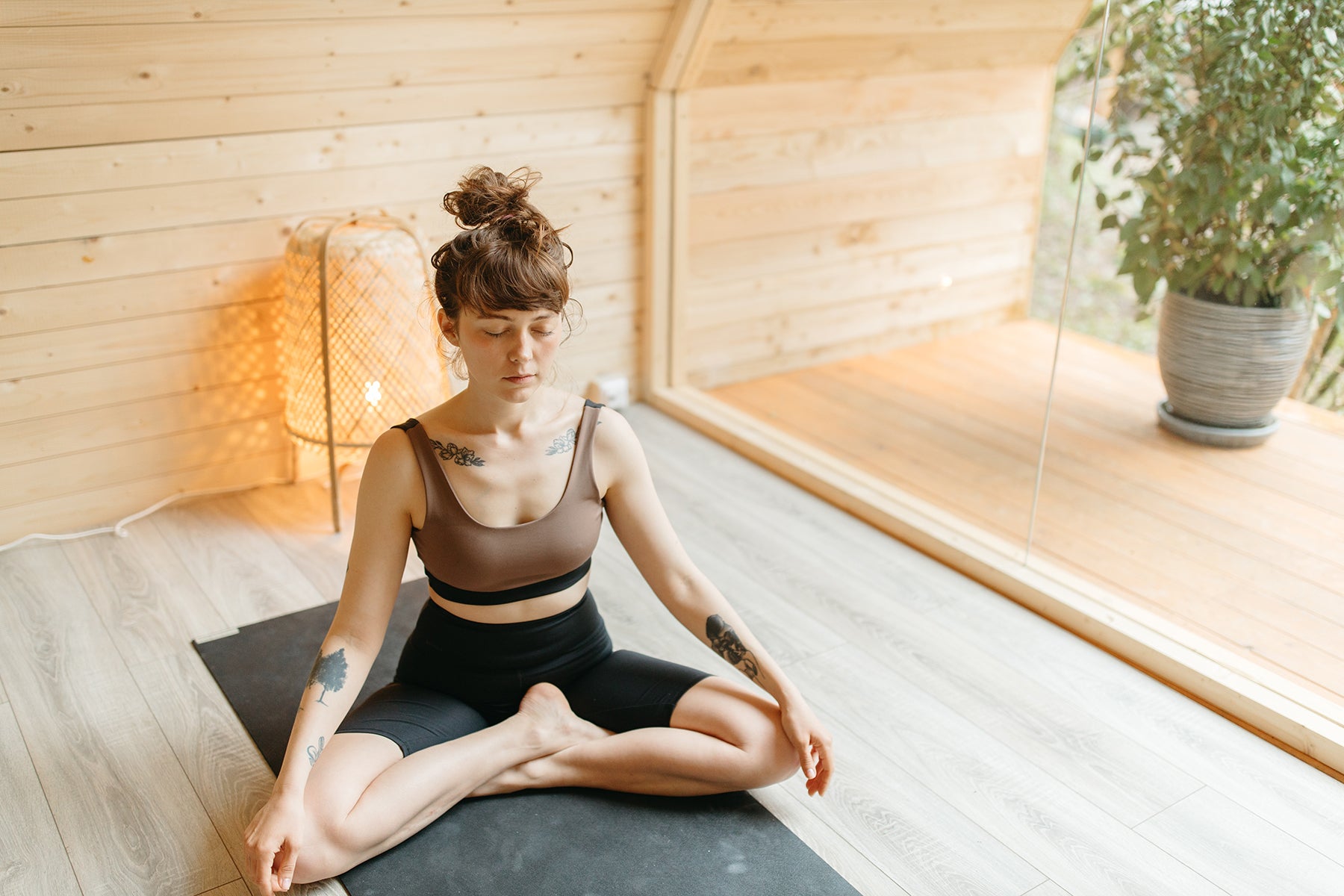
Meditation is a simple yet profound practise that takes you to a current state of consciousness where the body is calm and the mind is focused. Try our natural Yoga and Meditation incense to stimulate your senses, or see other incense you like.
Scientific studies have proven that meditation has a multitude of benefits:
- Reduces stress and anxiety.
- It decreases depression and promotes a more positive outlook on life.
- minimises inflammation in the body.
- It fosters connection while instilling a strong sense of identity.
- develops self-awareness.
- It improves memory and focus.
- It increases mental discipline.
- Reduce pain in the body.
- Improve sleep patterns.
- It reduces high blood pressure.
14. Bath & Skin Care
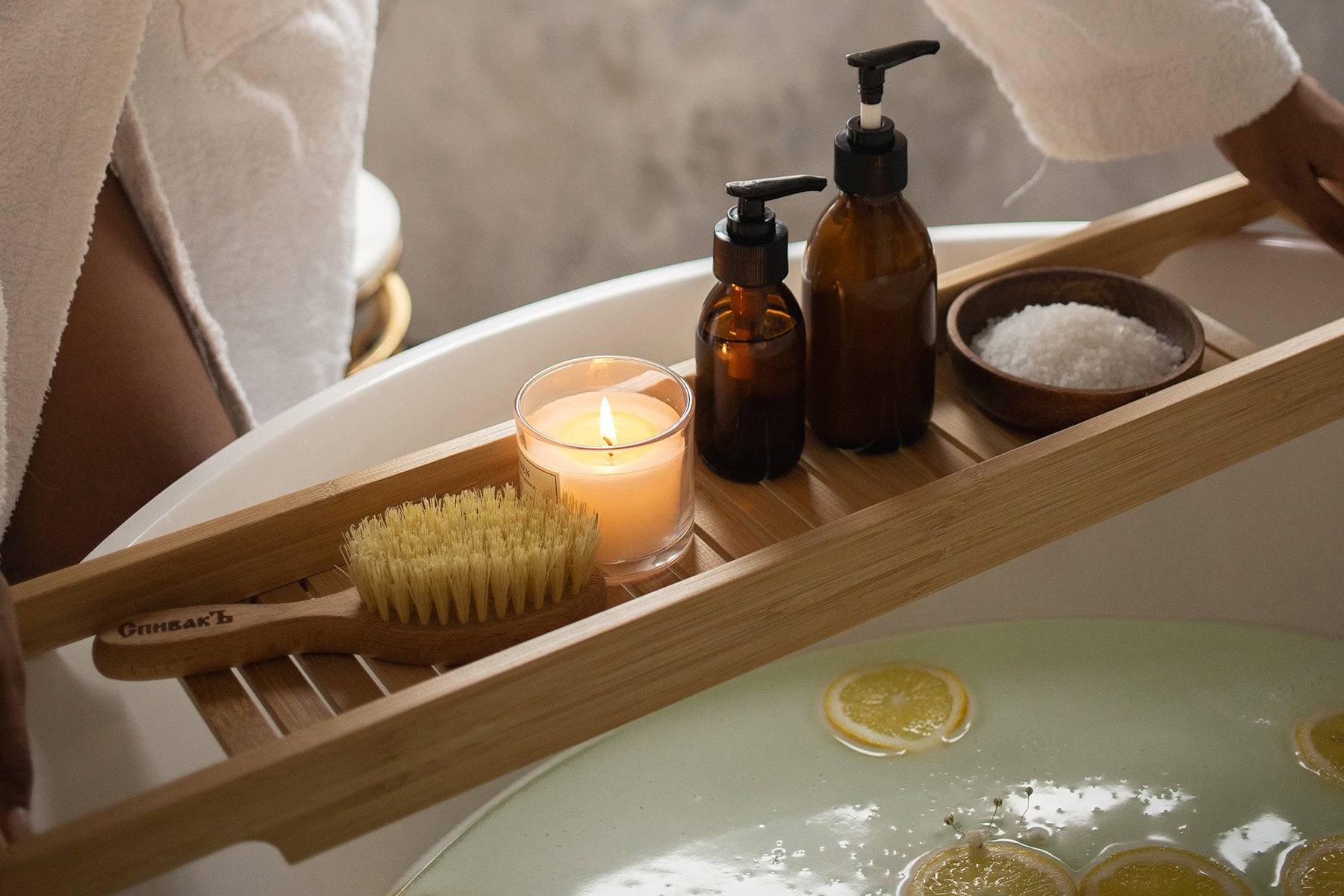
Finally, it's shower time! A dinacharya that we all already know. This morning ritual needs no explanation, as cleansing the body is a universal practice. However, we can share some Ayurvedic tips on how to get the most out of your morning shower.
Ayurveda recommends gently exfoliating the body with an all-natural body brush and using scrubs that contain natural ingredients. Since you already have oil on your skin from your morning auto-abhyanga, any of the exfoliants mentioned will work well with the residual oil to cleanse and nourish simultaneously.
Once or twice a week, I do a quick 1-minute body brush all over my body using a natural bristle brush to stimulate circulation, the lymphatic system and soothe the skin before the shower—do it in the morning as body brushing can be too stimulating at night.
We recommend using natural and organic soaps and scrubs that are free of artificial chemicals or harmful substances. At rogya, we always make a selection of the best products and we advise you to choose from the collection based on your skin type or dosha.
15. Breakfast
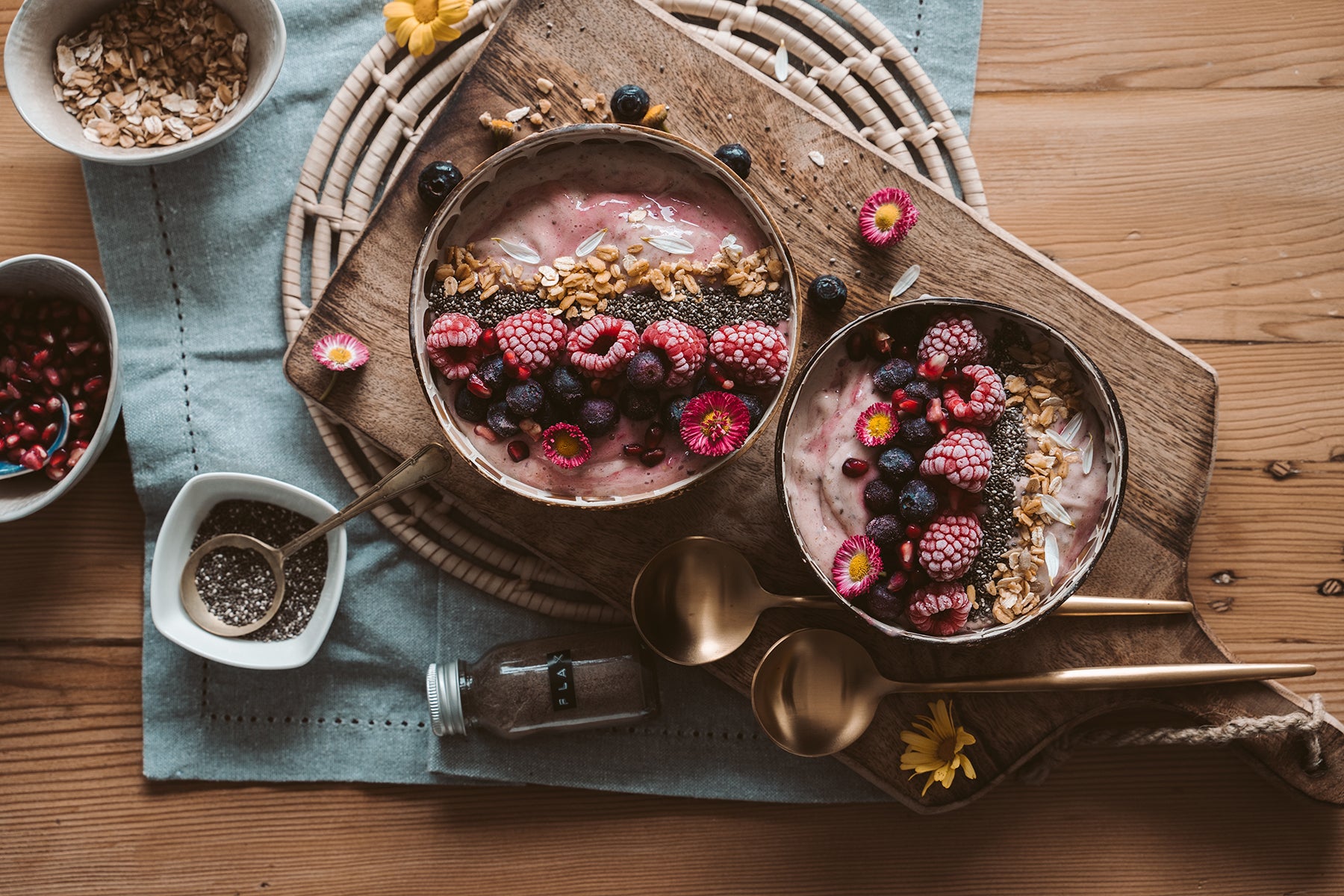
It is an important daily ritual to start the day with a balanced breakfast because you need the proper energy and nutrients to "enjoy the day" as well as stoke your agni, or digestive fire. Furthermore, what you eat becomes the building blocks of your dhatus (body tissues).
Ayurveda explains that most illnesses start in the digestive tract. Breakfast and a diet full of fresh, whole foods that are cooked and seasoned to meet each person's needs are important for preventing disease and improving health and well-being.
16. Tea
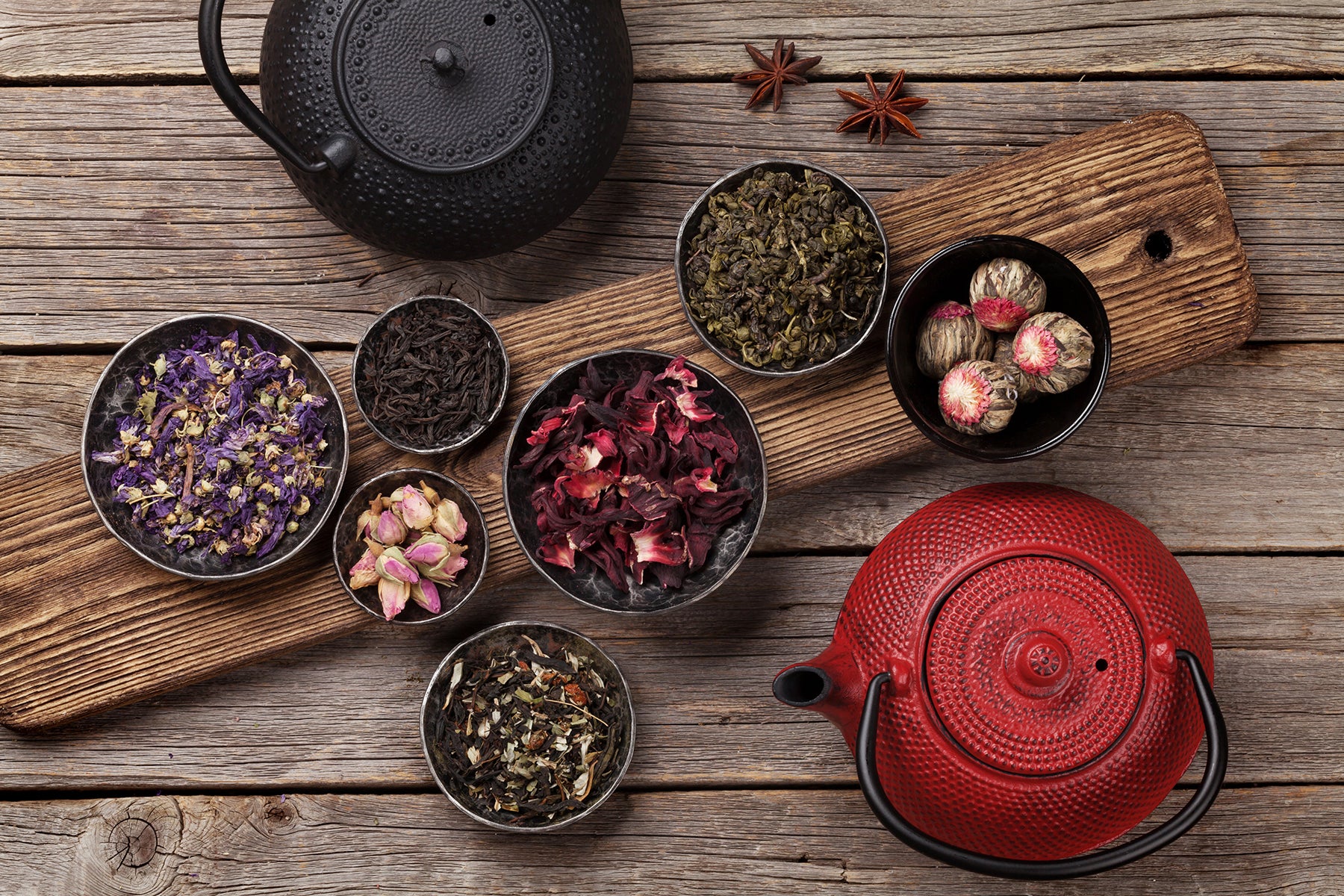
Drinking digestive tea with a meal is a fabulous way to moisten food and stir up agni. Digestive herbs called dipanas help to strengthen digestion and metabolism.
These herbs also help to absorb nutrients from food. It is important to note that Ayurveda does not recommend drinking cold beverages of any kind, even water, as this creates low agni. When agni is low, food is difficult to digest, causing digestive problems in the form of gas, indigestion, or nausea.
Each dosha has particular dipanas that work well with its ruling qualities. Since vata and kapha doshas are cold in nature, it is best to counterbalance them with warming and stimulating herbs. Likewise, it is best to ingest refreshing dipanas for the heated quality of pitta dosha. We suggest our Ayurvedic Energise Tea for Doshas Vata and Kapha, Ayurvedic Tea Relax for Doshas Vata and Pitta, and Ayurvedic Tea Purify for Doshas Pitta and Kapha.
Time for each Dosha
10am-2pm: Pitta Energy
To track the movement of the doshas throughout the day, Ayurveda recommends completing the morning dinacharya before 10 am. The Pitta dosha is considered the strongest between 10 am and 2 pm; thus, this is the ideal time to take advantage of the Pitta dosha's entrepreneurial energy and be productive with work, tasks, etc.
In short, whatever your most important tasks during the day are, these are the best times to complete them because you will have sustained mental focus and clarity due to pitta dosha qualities. It's also best to eat your biggest meal of the day during this time, preferably around noon, when pitta dosha energy is at its highest and agni can digest and absorb food the best.
Ayurveda also says to stay out of direct sunlight, especially on hot days, and to avoid doing hard physical work during these pitta hours, since both of these things can cause an imbalance of the pitta dosha.
2pm-6am: Vata Energy
Vata doshas begin to peak between these hours. As vata is composed of the elements air and ether, this time of day has amplitude and movement that can be used for creative projects and problem solving. Let yourself be led to think outside the box because vata energy can lead you to a creative solution.
Avoid a sugary snack or a caffeine break at this time of day, as it can easily throw your vata dosha out of balance and overstimulate your nervous system. Instead, drink a cup of hydrated tea blend and go for a walk in the afternoon to get the prana flowing through your body.
6pm -10pm: Kapha Energy
At this time of day, the Kapha dosha predominates, bringing with it a feeling of heavy and terrifying energy. To relax from the day, take a walk in nature between 6 p.m. and 8 p.m. or attend a gentle yoga class such as Restorative or Yin Yoga. At this point, you will want to flow with kapha energy, indulging in feelings of exhaustion from your long, productive day. There is no need to push yourself any further at this point, as this is the time to ground yourself and gradually prepare your body for rest.
